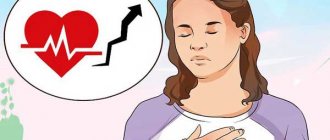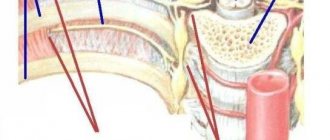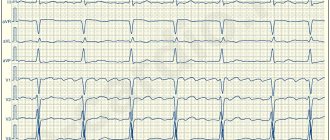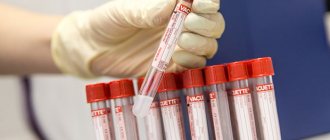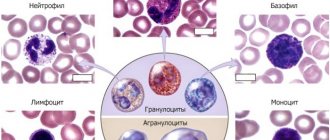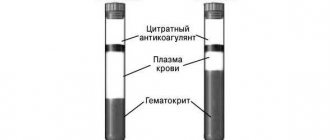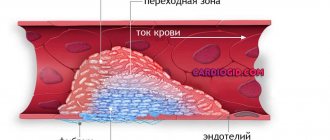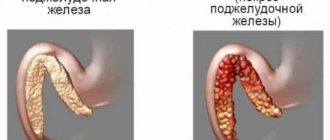Are rapid heartbeats, chest pain and shortness of breath preventing you from living a full life? Arrhythmia may be the cause of your discomfort. Arrhythmia is disturbances in heart rhythm that occur as a result of other disorders in the body.
The normal heart rate for a person under the age of 60 is 60-80 beats per minute. The heart muscle contracts at regular intervals, so a person gets used to it and does not notice his heartbeat. Deviations from the norm are accompanied by a rapid pulse and irregular contractions. Or it may be completely asymptomatic. Therefore, the presence of arrhythmia and its type can only be determined using instrumental diagnostics. Arrhythmia occurs more often in men over 60 years of age. However, in rare cases it also occurs in children.
Types of arrhythmias
There are many different types and forms of arrhythmias, but those that affect the ventricles are usually more serious than atrial problems. Arrhythmias can be caused by either a slow heartbeat (bradycardia) or a fast heartbeat (tachycardia) . A low heart rate can occur due to sick sinus syndrome. This occurs when the heart's natural pacemaker fails, causing the electrical signals that contract the heart to be transmitted more slowly. The condition is more common in older people and may be worsened by certain medications (such as beta blockers) that also slow the heart rate.
Heart block occurs when the electrical signal sent from the upper chambers of the heart (atria) to the lower chambers of the heart (ventricles) is interrupted. Without this signal transmission, the heart cannot contract effectively to pump blood to the body.
An increased heart rate may be the result of atrial fibrillation (AF). The arrhythmia clinic involves random signals that are fired in rapid succession. They cause fibrillation, which is an uncoordinated shaking of the muscular wall of the atria. It is often described as "heart cramps". The atria stop pumping blood effectively, but the ventricles receive enough blood for the heart to function. However, AFib is potentially dangerous because blood can pool in the atrium and lead to the formation of a clot. If one of these clots enters the brain, it causes a stroke. AF is the most common form of dangerous arrhythmia, affecting almost 1% of the population. It is more common in older people, affecting about 5% of the population over 69 years of age. One study showed that one in four people over 40 years of age develops FIP. Source: On the issue of classification of cardiac arrhythmias. Batyanov I.S., Batyanova E.I. Cardiovascular therapy and prevention, 2005.
Ventricular fibrillation (VF) is the most dangerous form of arrhythmia. The ventricles twitch but do not pump blood. If the twitching does not stop on its own or as a result of a defibrillator discharge, this complication of arrhythmia can be fatal.
Complications of atrial flutter
A common complication of flutter is fibrillation. This is a supraventricular tachyarrhythmia, characterized by chaotic and irregular electrical activity of the atria with a pulse rate of 350 to 700 per minute. As a result, the normal coordination of the atria is disrupted, and serious hemodynamic disorders (blood movement through the vessels) occur. This, in turn, is fraught with various complications, including acute heart failure, ischemic stroke, and acute respiratory failure. Without emergency treatment, these conditions are fatal.
Causes of cardiac arrhythmia in men or women
There are two common ways in which arrhythmias develop, which can be determined in a particular patient. There may be problems with the initiation of the electrical signal: either the sinus node is firing abnormally, or there is a competing impulse elsewhere in the heart. The second option is problems with the conduction of electrical impulses: connections from the atria to the ventricles are difficult (this is often called heart block).
People with heart disease are especially likely to develop arrhythmias, because heart disease, damage can prevent signals from the atria from reaching the ventricles, or certain areas of the heart may not fire normally.
High blood pressure and an overactive thyroid gland also increase the likelihood of arrhythmias. Alcohol can also cause atrial and ventricular arrhythmias. Some medications, such as decongestants and many prescription drugs, can make the heart susceptible to arrhythmias and should be used with caution in people with heart disease.
There are also hereditary and congenital (present from birth) types of arrhythmia, often resulting in a weak or delayed signal reaching the ventricles. The ventricles can emit their own signal, but it is often less than 40 beats per minute instead of the usual 60-90 beats characteristic of the sinus node. Source: "New Arrhythmia Theory" Clarifies Causes of Arrhythmia. Ermoshkin V.I. Educational bulletin “Consciousness”, 2015. p. 22-30.
Symptoms
When the heart beats faster than normal, it is called tachycardia . Symptoms and signs of arrhythmia include:
- chest discomfort
- cardiopalmus,
- dizziness,
- sometimes fainting.
When the heart beats slower than normal, it is called bradycardia . It can cause fatigue, dizziness, lightheadedness and fainting as it usually causes low blood pressure.
Almost everyone's heart will flutter from time to time, and it usually doesn't mean anything. More often, symptoms of cardiac arrhythmia occur in men and treatment is not always necessary. But if a person has chest pain, feels weak, or notices that the pulse is irregular, either very fast or very slow for a long period, it is time to see a doctor. Source: Insider's View Focus on the Arrhythmia Patient. Boqueria O.L. Annals of Arrhythmology, 2014. p. 196-199.
Symptoms of this disease may not appear. Arrhythmia can be detected by a specialist during a routine clinical examination: before any of its signs appear. But predominantly, heart rhythm disturbances are characterized by the following symptoms:
- pain in the chest;
- increased feeling of heartbeat;
- accelerated heartbeat;
- slow heartbeat;
- dyspnea;
- loss of consciousness or fainting.
In most cases, in a person who has a certain type of arrhythmia, such arrhythmia occurs repeatedly.
Some types of arrhythmias are initially asymptomatic or with few symptoms. Other types of arrhythmias, on the contrary, manifest themselves in pronounced symptoms, but do not have serious consequences. Typically, the nature and severity of the underlying heart disease that causes the arrhythmia are more important than the arrhythmia itself.
Interruptions in the heart: what to do in this case?
If you notice that your condition has begun to worsen, shortness of breath, ringing in the ears (noise in the head), dizziness, darkening of the eyes and heart began to pound furiously, do the following:
- Open all windows to allow fresh air to fill the room.
- Sit down and try to calm down, because panicking can only make things worse.
- Then catch your breath and try to lie on your back with a pillow under your back.
- If you see that this did not help, call an ambulance.
Diagnostics
The stethoscope is still a valuable tool for identifying arrhythmias, but there are modern tests that can pinpoint the problem and signs of cardiac arrhythmias in women or men. An electrocardiogram (ECG) displays a graph of the heart's electrical activity using small electrodes attached to the chest. The curve on these graphs shows the type of arrhythmia. Since the arrhythmia may not occur in the hospital, there are portable ECGs that the patient wears at home. Some are turned on continuously over a period of time (called a Holter monitor), while others turn on when a person senses an arrhythmia (called an event monitor or loop recorder).
Certain arrhythmias may be associated with exercise, so patients may be asked to walk on a treadmill or ride an exercise bike while connected to an ECG machine.
Electrophysiological study (EPS) is a more complex test. Thin tubes are inserted into a blood vessel in the leg and directed toward the heart. They hold electrodes that can find muscle tissue that may be causing abnormal electrical activity.
Modern methods of treatment
In some cases, arrhythmias occur due to bad habits, such as drinking too much alcohol. Giving up the habit will be a real help for arrhythmia. Reducing stress, avoiding caffeine, improving diet, and increasing the amount of exercise the patient does during the week can also reduce the incidence of arrhythmias. Before you begin making these changes, you should first talk to your doctor. For others, arrhythmias are a symptom of heart disease and will not go away unless the underlying problem is addressed. Fortunately, many people can benefit from invasive treatment of cardiac arrhythmias using modern medical interventions, especially surgery and special electrical devices.
Drug treatment for cardiac arrhythmia is also possible. There are several medications that can slow a fast heartbeat (known as "antiarrhythmic drugs"). Beta blockers are medications that are very useful in controlling heart rate in people with various heart conditions. Calcium channel blockers may also be used to control heart rate. Often these drugs can be used for more than one purpose (eg, to control heart rate, high blood pressure, protect the heart after a heart attack). The drug Digoxin is derived from a substance called Digitalis, which has been used for arrhythmias for over 200 years.
Other medications called antiarrhythmics can convert the abnormal rhythm to a normal one and prevent seizures from recurring (known as "rhythm control"). Patients with atrial fibrillation (AF) are usually prescribed the anticoagulant Warfarin, which thins the blood and prevents blood clots and strokes. Recent studies have shown that heart rate control and adequate anticoagulation are very important (perhaps even more important than rhythm control) for people with certain types of arrhythmias (eg, AF).
In some cases, AF returns to a normal rhythm with a treatment called cardioversion. The patient is given a small electrical shock that resets the heart's natural pacemakerSource: Innovations in the Treatment of Cardiac Arrhythmia. Zh.A. Arzykulov, A.A. Omarov, B.B. Kituev, F.A. Tursunova, A.A. Yeshtay, N.G. Pavlova. Bulletin of Surgery of Kazakhstan, 2012. p. 4-5.
Many arrhythmias can be completely treated with radiofrequency ablation. Thin catheters are passed into the heart to send radio waves directly to electrical pathways carrying inappropriate signals. These waves destroy abnormal tissue, preventing it from causing abnormal heart rhythms. Artificial pacemakers can take over the job of generating electrical signals. They are not limited to treating low heart rates, newer pacemakers can also control high heart rates. They can operate for up to 15 years on a single battery to prevent heart arrhythmia. Some save energy by turning off when the heartbeat is normal. Most units are placed under the skin, requiring only minor surgery.
Classification of pathology
There are several forms of atrial flutter. Determining the type of pathology is an extremely important diagnostic criterion, on which the subsequent method of treatment depends.
Typical and atypical trepidation
A typical variant is isthmus-dependent atrial flutter, in which the wave of nervous excitation is directed counterclockwise around the tricuspid valve.
The atypical form is characterized by the movement of waves in a clockwise direction and is a right-sided type of atrial flutter.
Frequency of occurrence
Atrial fibrillation is classified taking into account the duration and nature of the manifestations. This indicator directly affects the need and method of therapeutic procedures.
The following forms are distinguished:
- Primary. A case of atrial fibrillation was diagnosed for the first time or was discovered accidentally during routine diagnostic procedures.
- Paroxysmal. It is a paroxysmal disorder in which the heart flutters for no longer than 7 days. Most often, the attack lasts up to 2 days. Relapses are absent or occur extremely rarely. The functioning of the sinus node stabilizes on its own without the use of special medications.
- Persistent. It is an attack of fibrillation, in which fluttering occurs for more than 7 days. This category also includes a long-term persistent form, the duration of which reaches 1 year. It is the main indication for therapy aimed at restoring sinus rhythm.
- Constant. A form of atrial fibrillation, which is characterized by a long-term (longer than 1 year) course. Therapeutic procedures were either not carried out or turned out to be ineffective.
It is important to note that heart flutter is often diagnosed by chance. Intense manifestation indicates that the pathology is aggravated by concomitant disorders, since mild forms of fibrillation go unnoticed, as they are not felt by the patient.
If such a symptom is detected, especially if it recurs regularly, you should contact a cardiologist rather than attempt to make a diagnosis on your own.
First aid for an arrhythmia attack
Defibrillators are devices that restart blocked heart muscles by delivering electricity to the chest. Defibrillators are effective in stopping the heart from ventricular fibrillation, but because ventricular fibrillation can be fatal in less than 4 minutes, they should be used as soon as possible. Most defibrillators are external devices, but there are now automated implantable cardioverter/defibrillators (AICDs). These devices can be as large as pacemakers. They can detect dangerous fibrillation and return the heart to normal before any damage is done.
Article sources:
- "New Theory of Arrhythmia" clarifies the causes of arrhythmia. Ermoshkin V.I. Educational bulletin “Consciousness”, 2015. p. 22-30
- Innovations in the treatment of cardiac arrhythmia. Zh.A. Arzykulov, A.A. Omarov, B.B. Kituev, F.A. Tursunova, A.A. Yeshtay, N.G. Pavlova. Bulletin of Surgery of Kazakhstan, 2012. p. 4-5
- On the issue of classification of cardiac arrhythmias. Batyanov I.S., Batyanova E.I. Cardiovascular therapy and prevention, 2005
- A look from the inside focuses on a patient with arrhythmia. Boqueria O.L. Annals of Arrhythmology, 2014. p. 196-199
- Cardiac arrhythmias from the point of view of their dimension. Ubiennykh A.G. Measurement. Monitoring. Control. Control, 2021. p. 70-76
- Epidemiology of arrhythmias (review of literature data). Zatonskaya E.V., Matyushin G.V., Gogolashvili N.G., Novgorodtseva N.N. Siberian Medical Review, 2021. p. 5-16
